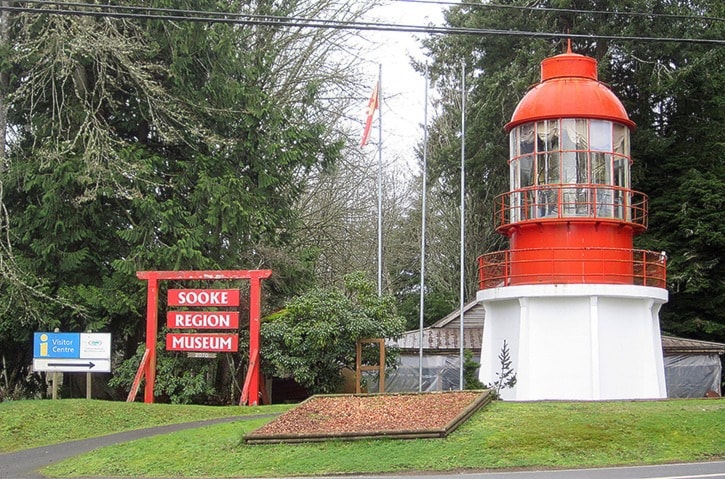Brianna Shambrook
Contributed
The lighthouse on the Sooke Region Museum grounds is one of our most asked about artifacts.
The red lantern was first located on Triangle Island in 1910 and the lens inside originally rotated in the Estevan Point Lighthouse. Both the lantern and the lens were donated by the Canadian Coast Guard and moved to the museum grounds in 2004 under the direction of Maywell Wickheim.
The transportation and installation of these two artifacts was an incredible feat that required the assistance of more than 100 volunteers and several local companies.
The lantern weighs about 14 tonnes and is made of cast iron and glass. It sits on a concrete tower that was built on site with the assistance of a federal employment grant and a large cash donation by the Sooke Lions Club. The lantern was refurbished, painted (keeping its red colour) and lifted, by crane, onto the concrete tower.
The lantern’s first home was on Triangle Island, approximately 45 kilometers off northern Vancouver Island. Due to savage weather and the lighthouse being situated in the fog banks, it was deemed unusable to mariners. In 1918 the lighthouse was decommissioned and dismantled in 1920.
Inside the lantern is a First Order Fresnel lens, which is identical to the original lens that operated on Triangle Island. This is one of the largest lenses in the world and there are very few remaining. This particular lens was made by the Chance Brothers in Birmingham, England, but it was designed by a Frenchman named Augustin-Jean Fresnel. In the book, Keepers of the Light, written by Donald Graham, it is stated that this lens originally cost $35,000.
This First Order lens weighs almost three tonnes and beamed four flashes of light every ten seconds. When it was at Estevan Point, the lens rotated on a bed of mercury until this was determined hazardous; at that point, the lens was retired.
As a safety precaution during the move, the lens was carefully dismantled, wrapped in blankets and placed in wooden crates. Museum employee Beverley Myers recalls several Sooke residents offering up their blankets to wrap the lens parts in during transportation.
There are more than 30 artifacts on display in our lighthouse. A majority of these artifacts are oil lanterns, but there are also pieces of the lens that are used for example during tours. Lining the walls are archival reproductions detailing the history of Triangle Island, Estevan Point, the lantern and lens, and past lighthouse keepers.
At the Sooke Region Museum, we have a binder detailing the installation of the lantern and lens. Visitors are welcome to take a look at the binder and see the memorable pictures taken during this undertaking.
If you purchase tickets to be a Tourist in Your Own Hometown, you can have a free tour of the lighthouse, or Moss Cottage, between Feb. 25 and 28 from 9:30 a.m. to 4.p.m. Tickets are $15 and can be purchased at the museum. From June to August, the museum offers daily tours of the lighthouse for $3 per person.
•••
Brianna Shambrook is collections and exhibits manager at Sooke Region Museum.
